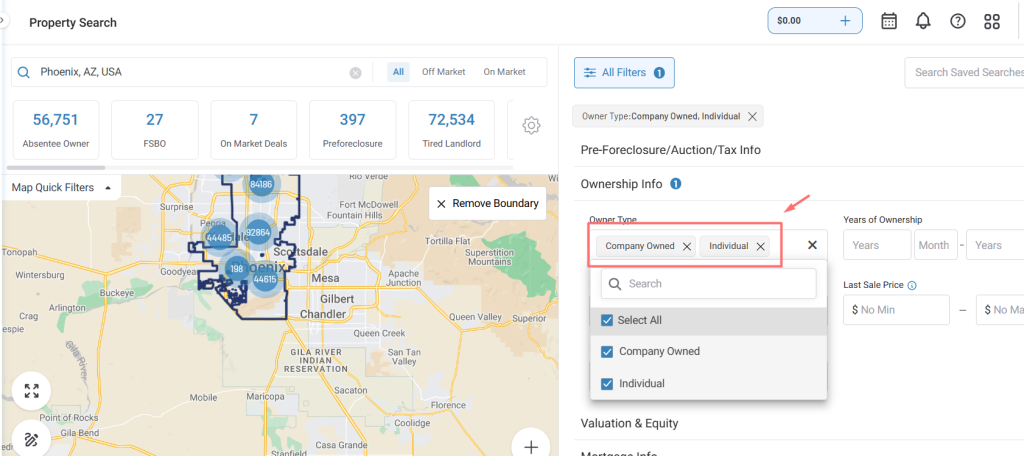A homeowner title shows who legally owns a property and has the right to use and sell it. Understanding this is crucial for any property transaction. This article will cover the essentials of what a homeowner title is, its components, and why it matters.
Key Takeaways
- A homeowner title signifies legal rights and interests in a property, distinct from the deed, which is the document facilitating ownership transfer.
- Key components of a home owner title include rights to possession, control, exclusion, enjoyment, and disposition, which empower the titleholder.
- Understanding different types of property ownership titles, such as sole ownership and joint tenancy, is crucial for determining rights, responsibilities, and inheritance options.
What Is a Home Owner Title?
A homeowner title signifies who holds the legal rights and interests in a property. Holding the title indicates your legal right to occupy, use, and transfer the property. This concept of ownership is fundamental in real estate transactions, as it determines who has the authority to sell or transfer the property.
The distinction between title and deed is significant. The title represents legal ownership, while the deed is the physical document required for ownership transfer. The deed facilitates the title transfer to the buyer, officially making them the legal owner.
Grasping these aspects of a home’s title helps avoid potential issues down the road.
Key Components of a Home Owner Title
A homeowner title includes several key rights that grant the titleholder control over the property:
- Possession: allows the legal owner to occupy and use the property
- Control: lets them use it as they see fit within legal boundaries
- Exclusion: enables the owner to prevent others from entering the property
- Enjoyment: ensures the owner can use the property without interference
- Disposition: allows the owner to sell or transfer the property
These rights collectively empower the titleholder to manage their property effectively.
Types of Property Ownership Titles
Understanding the various types of property ownership titles is essential as they determine how ownership interests are divided and inherited. Factors such as family circumstances, reasons for buying, and future plans affect home title selection. The manner in which a title is held also has legal implications for property sales, debt collections, and estate management.
The main types include sole ownership, joint tenancy, tenancy in common, and tenants by entirety.
Sole Ownership
Sole ownership is the simplest form of property ownership where one person legally owns the entire property. Common among single homeowners or married individuals who prefer to keep the property under one name, the sole owner has complete control and responsibility over the property.

Try Batchleads Risk Free for 7 Days – Sign Up Today
Whether held by an individual or a legal entity, sole ownership ensures that the property’s title is clear and simple, allowing for straightforward decision-making and transfer processes without the need to consult with other owners.
Joint Tenancy
Joint tenancy involves two or more individuals holding equal ownership interests in a property. Each co-owner has an undivided share, meaning they all have equal rights to the entire property. A significant feature is the right of survivorship, where the deceased owner’s share automatically passes to the surviving co-owners.
Often chosen by couples or business partners due to the simplicity of transferring ownership upon death, this type of ownership requires careful consideration, as all decisions about the property must be made jointly.
Tenancy in Common
Tenancy in common allows multiple individuals to hold distinct ownership shares in a property. Unlike joint tenancy, these shares do not have to be equal. Each co-owner has the right to sell or will their share independently, without affecting the ownership interests of others.
This flexible arrangement can be tailored to the specific needs of the owners, making it a popular choice for both residential and commercial real estate investments. However, it lacks the right of survivorship, meaning the deceased owner’s share passes according to their will or state law.
Tenants by Entirety
Tenancy by entirety is a unique form of ownership available only to married couples. The couple is treated as a single legal entity, providing protection from creditors who cannot claim the property for debts owed by one spouse. Upon the death of one spouse, the surviving spouse automatically becomes the sole owner.
This type of ownership requires mutual agreement for any property transactions, ensuring both parties are involved in major decisions. It offers a high level of protection and simplicity, making it a preferred choice for married couples.
What is a Title Search and How to Do it?
Conducting a title search ensures the clarity of a home’s title and prevents future legal disputes over ownership. A thorough title search verifies the seller’s right to sell the property and checks for any liens, debts, or claims that may affect the property’s title. This process can uncover hidden encumbrances, such as easements or zoning issues, that could impact your use of the property.
Resolving title problems before completing the sale avoids derailing the transaction. Many buyers hire a title company to handle the complexities of a title search and consult a real estate attorney for any identified issues. For a reliable and streamlined experience, many homeowners often turn to trusted partners like Title Genius, known for their expertise in simplifying title transfers while ensuring legal compliance and security throughout the process.
Title Insurance: Protecting Your Ownership Rights
Title insurance protects your ownership rights. Owner’s title insurance safeguards against legal challenges to ownership, such as title fraud or claims from previous owners. Without this insurance, homeowners risk losing their property and the money invested if disputes arise.
While not legally required, owner’s title insurance is strongly recommended for the security it provides. Lenders always require lender’s title insurance to protect their investment in the property.
This insurance is a one-time premium paid at closing, offering lasting peace of mind by covering potential unknown property issues.
Different Types of Deeds in Relation to Title
Deeds and titles, though related, serve different purposes in real estate transactions. A deed is the legal document that transfers ownership of a property from the seller to the buyer, whereas the title represents the legal ownership of the property.
Understanding the various types of deeds is essential as they provide different levels of protection regarding the title.
General Warranty Deed
A general warranty deed offers the highest level of protection for the buyer. It includes covenants that guarantee the grantee against any claims from previous owners. This deed ensures the title is clear and free from any encumbrances, providing the buyer with maximum security.
Special Warranty Deed
A special warranty deed limits the grantor’s liability to only defects that occurred during their ownership period. While it provides some protection, it does not cover issues that arose before the grantor’s ownership.
This type of deed is often used in commercial real estate transactions.
Quitclaim Deed
A quitclaim deed provides limited protection for the buyer. It does not guarantee that the seller has clear title to the property. It transfers any ownership interest the grantor may have without warranties. This deed is commonly used among family members or trusted parties.
However, it carries risks as there are no guarantees of the grantor’s right to transfer ownership.
How to Obtain and Transfer a Home Owner Title
Obtaining and transferring a homeowner’s title involves several steps. Real estate professionals ensure that all necessary steps are followed and that the process runs smoothly. Involving a real estate agent or attorney can minimize risks and ensure a clear title transfer. Key steps in obtaining and transfer of a home owner title are
- Purchase Agreement: Begin with a signed agreement between the buyer and seller that outlines the terms of the sale.
- Title Search: Conduct a title search to ensure there are no liens or claims against the property, confirming clear ownership.
- Title Insurance: Obtain title insurance to protect against future claims or disputes over the property title.
- Closing Process: Complete the property purchase during the closing meeting, where you sign all necessary legal documents, including the deed.
- Deed Transfer: The seller transfers ownership by signing a deed (typically a warranty or quitclaim deed) in the buyer’s name.
- Recording the Deed: File the signed deed with the local county recorder’s office to make the title transfer official.
- Pay Closing Costs: You pay fees such as taxes, title insurance, and administrative costs during the closing process.
- Receive the Title : Once the deed is recorded, the buyer receives the title, officially becoming the homeowner. After closing, ensure you obtain a physical copy of the deed, as it serves as essential proof of ownership.
The Role of Real Estate Professionals
Real estate professionals are indispensable in ensuring smooth property transactions. They act as negotiators, securing favorable terms for their clients. They process the intricate details of transactions, ensuring the correct and timely handling of all legal documents.
Throughout the home buying process, real estate agents provide continuous support and guidance, helping clients navigate each phase. Their experience and market insights are invaluable in resolving challenges and keeping deals on track. Agents also maintain a network of industry professionals, facilitating access to mortgage brokers, inspectors, and appraisers.
Summary
Understanding homeowner titles is crucial for anyone engaging in real estate transactions. The homeowner holds legal ownership, exercising and transferring property rights. By learning the key components, types of ownership, and the importance of title searches and insurance, you can ensure a smooth home buying process.
Familiarizing yourself with these concepts allows you to navigate property ownership confidently, protecting your investment and rights. Whether you’re buying, selling, or exploring, staying informed is your best asset.
Frequently Asked Questions
What is the difference between a title and a deed?
The difference between a title and a deed is that the title signifies legal ownership of a property, whereas the deed is the actual document that facilitates the transfer of that ownership.
Why is a title search important?
A title search is crucial as it confirms the seller’s ownership rights and identifies any liens or claims that may impact the property’s title. This ensures a secure transaction and protects your investment.
What is the right of survivorship in joint tenancy?
The right of survivorship in joint tenancy automatically transfers a deceased co-owner’s share to the surviving co-owners, avoiding probate and preserving joint ownership.
Do I need title insurance if I already have a clear title?
Yes, you should consider title insurance even with a clear title. It safeguards against unknown property issues and legal challenges that could arise in the future.
How can I obtain a copy of my home title?
To obtain a copy of your home title, you can either access your deed through your county’s public records online or visit the County Recorder.



